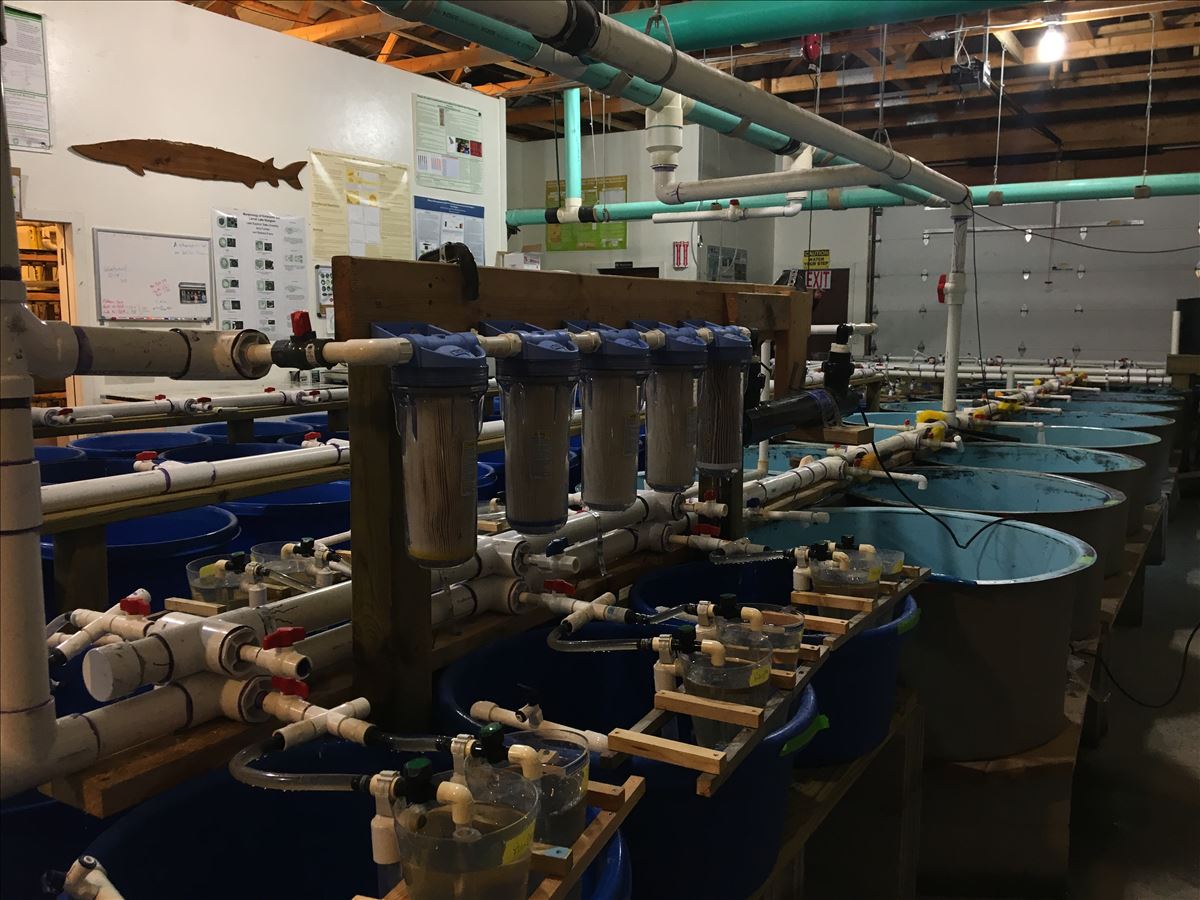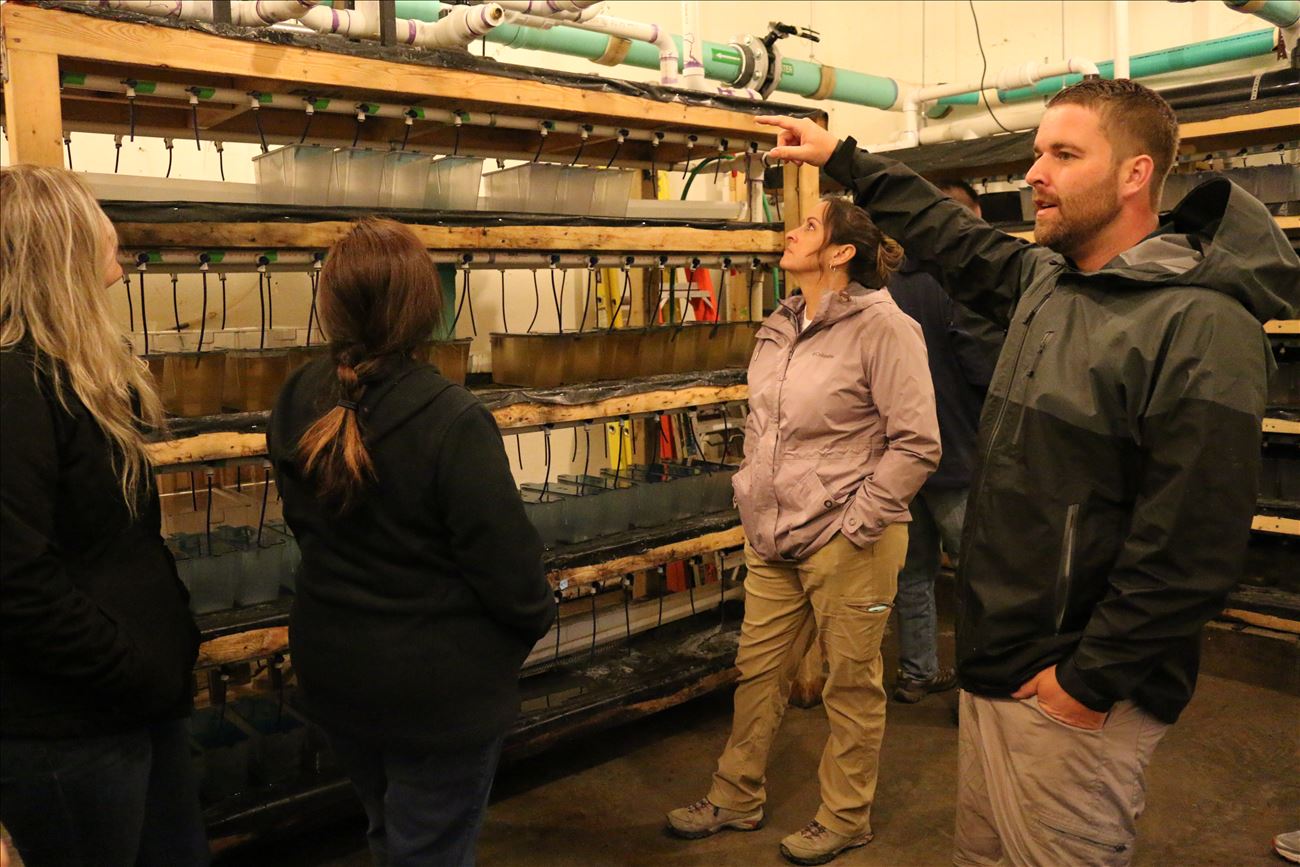The history of the hatchery is a one that came from the need of a near lost population, that of the ancient sturgeon. Nurtured by a committed community directly valuing the fishery, and the native tribe that uses the fish still as a source of living. This hatchery offers a story interconnecting people with these ancient fish.
The great lakes sturgeon are the oldest, and considered by Doug Larson, a fisheries scientist who manages the hatchery, to be the best studied species from the Triassic period, some 245 to 208 million years ago! This dinosaur fish would not be able to survive as well as they have without the help from the Sturgeons for Tomorrow hatchery program. Doug Larson has been the the lead researcher and boss in the program for the four years that he has been directly with the program, but he has done work for the for the program past six years. Before this though Mr. Larson went to Central Michigan University and he worked on environmental remediation, he told me “it became abundantly clear that I wanted to work in the public sector, not the private sector. I wanted to work on projects that benefited the greater good, rather than science for the sake of production.” You can easily tell that Doug is a fun guy to work with and that he cares about the impact of this important work. He is very passionate about his work. He will tell you at he believes that his job is the best job ever, and that he is lucky to be able to study the sturgeon in the Onaway, Mich. area.
Starting in 1999 the Sturgeon hatchery has been there to aid this struggling lake sturgeon population. There are two main reasons why that hatchery came to be. First, there are three hydro powered dams that have fragmented the Black River of Onaway so the sturgeon can not swim up river to spawn. Which in turn killed the fishing not only for the local community, but also for the native tribes! The dams stopped the spawning of sturgeon up river, which limited sport fishing for local communities and harvest fishing for native tribes; which created the need for the hatchery. The second reason that there was a need for the hatchery is the historic overfishing and poaching of the sturgeon. Sturgeon were prized for their eggs to make caviar and their meat for smoking. Also they were not hard to poach because they were easily accessible when spawning in the river. Slowly, the sturgeon population has increased as a result of current harvest restrictions, local 'Sturgeon Guard' security provided by community volunteers, and the science and stocking contributions of this hatchery. In time the population has risen to a sustainable level with the hatcheries help as a “conduit between larval and adolescent stages in their lives.” The sport fishery is not the only reason why people loved the sturgeon, the annual “Sturgeon Shivaree” is a cherished community festival event.
The history of the hatchery is a one that came from the need of a near lost population, of the ancient sturgeon and from the loving community for the fish. Because of Sturgeon for Tomorrow, because of the people who love this fish and a caring community culture this sturgeon live to roam the bottoms of this Great Lakes waterway.
Story written by Ted Johnson, Alpena High School - Science in the Sanctuary 2019
Sources:
Doug, Larson. Michigan State University. Personal interview. 29 May 2019.
Sturgeon for Tomorrow Black Lake Chapter, 2004, May of 2019

